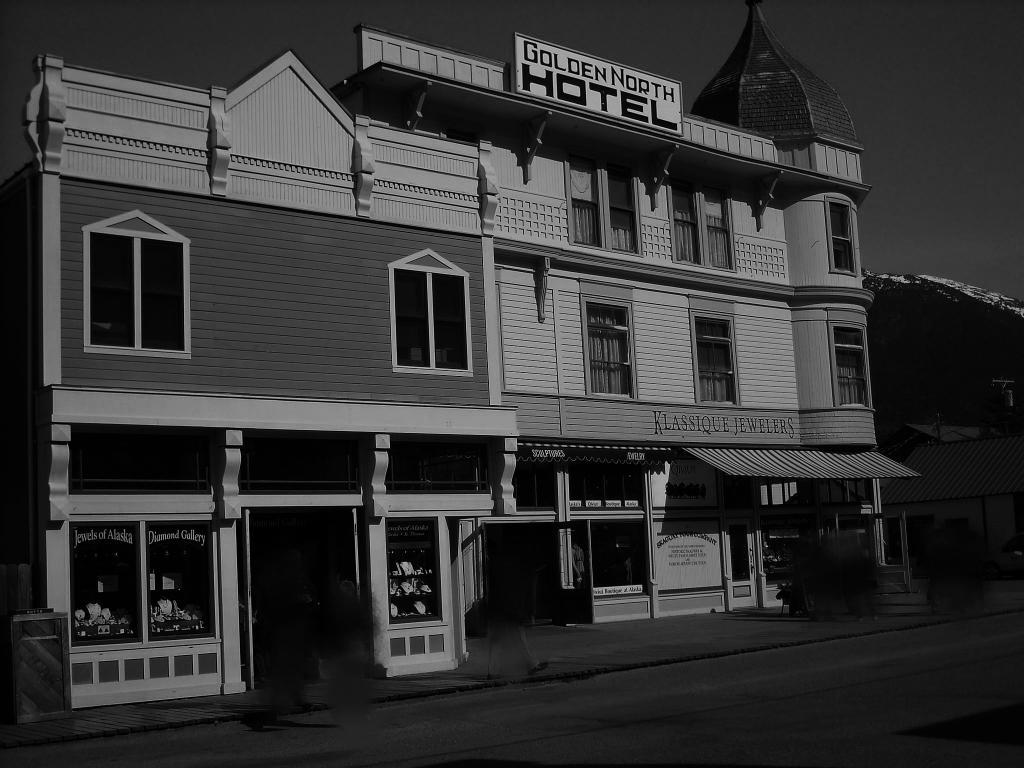As the forty-ninth state of the United States, Alaska is often described by locals as being thirty years behind the contiguous United States—with the days of pioneers and people flocking to take advantage of the gold rush set so recently in the past, it’s not too far-fetched to see how life might be a little slower in the Last Frontier. This also means that the ghost stories that haunt the oldest buildings in the state of Alaska are a little bit more recent and sometimes seem a little bit more vivid.
The Klondike Gold Rush
The Klondike Gold Rush began in the Yukon in 1896, when gold was first discovered, this drew roughly one hundred thousand prospectors into the territory—all of whom decided they would strike it rich. Skagway served as the most direct route to the gold-fields, so most of the traffic flowed through this deep-water port. This, of course, caused the population of Skagway to explode nearly overnight, with a population going from approximately seven hundred residents in 1897 to over ten thousand in 1898, it made it the largest city in Alaska at the time. That rush only lasted about two years and the population dwindled back under two thousand. The times in which the Klondike Gold Rush was underway, created an atmosphere that was rife with chaotic ambition, corruption, lawlessness, disease, shattered dreams, and many untimely deaths. Built at the height of the gold rush in 1898, the Golden North Hotel provided accommodations and refreshments to nearly one thousand prospectors who passed through the city on a weekly basis. It was a breeding ground for ghost stories.
The Origin of Scary Mary
One of the most legendary ghosts in Alaska goes by the name of Scary Mary and her story begins with a Gold Rush expedition. Mary came to Skagway, Alaska as a blushing young woman, already engaged to a prospector that went by the name of Klondike Ike—she checked into the Golden North Hotel where she and Ike became engaged and were set to start their future together. The two lovers spent several days at the hotel before Ike had to return to his prospecting ventures over Chilkoot Pass. Mary’s fiancé, Klondike Ike, set off over five hundred miles to the gold-fields with tremendously high hopes that he would win them their fortune—unfortunately for both Ike and Mary, Ike never returned. Ever the loyal partner, Mary waited for Ike to return home to her—she locked herself in the room the couple had rented, lost in the abyss of worry for her lover, and waited. When the housekeepers of the Golden North Hotel finally broke down the door with concern, they discovered Mary in the wedding dress she had planned to be married in, dead and waiting for Ike to return to her, so that they may marry. In many of the stories, it is said that Mary ended up coming down with a fatal case of pneumonia while waiting for Ike in room 23—other stories imply that after months of waiting for his return, she simply locked herself in her room disallowed any company and refused to eat.

First-Hand Experiences
Legends tell us that Mary still hasn’t checked out of her room at the Golden North Hotel and since her death arrived all-too-soon, that she has been checking up on guests in the middle of the night. Her apparition appears as a pale figure and is seen looking through the hotel windows, waiting for her lover’s return from the mountains. There have been reports of cold air pockets when walking through the hallways and a subsequent glimpses of white rushing past them—even more strange are the reports of the unfortunate guest who wakes up to Mary’s ghost hovering above their beds as if checking to be sure that Ike isn’t in bed with another woman.

Georgia-based author and artist, Mary has been a horror aficionado since the mid-2000s. Originally a hobby artist and writer, she found her niche in the horror industry in late 2019 and hasn’t looked back since. Mary’s evolution into a horror expert allowed her to express herself truly for the first time in her life. Now, she prides herself on indulging in the stuff of nightmares.
Mary also moonlights as a content creator across multiple social media platforms—breaking down horror tropes on YouTube, as well as playing horror games and broadcasting live digital art sessions on Twitch.

